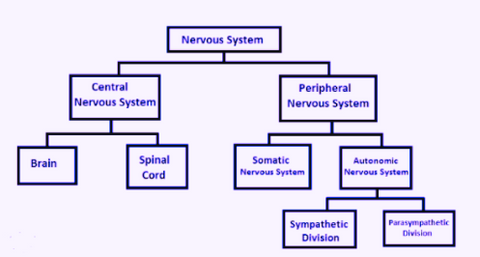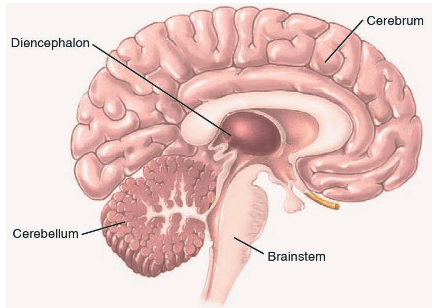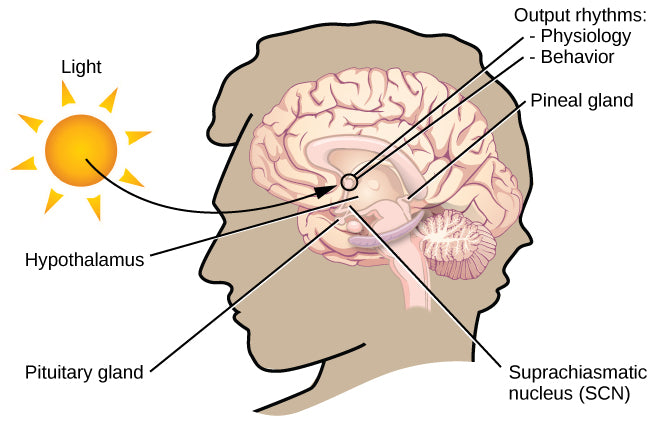The Nervous System
The Nervous System: Your Body's Communication Network
Hey there, students! Have you ever wondered how your body's different parts communicate with each other? Well, it's all thanks to the amazing nervous system. This complex network of nerve cells carries messages to and from the brain and spinal cord, ensuring that everything in your body works together harmoniously. And guess what? The brain, our body's powerhouse, is the one in charge of controlling this incredible system. Even though it only weighs about 2% of your total body weight, it's responsible for overseeing the entire show and making you who you are.
Let's dive into the divisions of the nervous system and explore how each component plays its unique role in keeping your body in sync.
The Central Nervous System (CNS): Command Central
The CNS consists of two crucial parts: the brain and the spinal cord. Together, they have two main functions: controlling your behaviour and regulating your body's physiological processes. In order to do that, the brain needs to receive information from your sensory receptors like your eyes, ears, and skin, and then send messages to your muscles and glands. That's where the spinal cord comes in. It's a collection of nerve cells that runs along your spinal column, relaying information between the brain and the rest of your body.

Let's start with the spinal cord.
Its primary job is to transmit information between the brain and the rest of your body. This allows the brain to monitor and regulate vital processes like digestion, breathing, and voluntary movements. The spinal cord is connected to different parts of your body through pairs of spinal nerves. These nerves link up with specific muscles and glands, enabling smooth communication. For example, spinal nerves branching off from the thoracic region of the spinal cord carry messages to and from your chest and parts of your abdomen. Cool, right? But that's not all! The spinal cord also contains circuits of nerve cells that allow you to perform simple reflexes without involving the brain directly. Think about quickly pulling your hand away from something hot—that's your spinal cord working its magic. However, if the spinal cord gets damaged, areas below the injury site won't be able to communicate with the brain anymore, causing loss of function.
Now, let's turn our attention to the brain.
Picture it as a superstar divided into four main areas: the cerebrum, cerebellum, diencephalon, and brain stem.
The cerebrum, the largest part of the brain, is further split into four lobes, each with its own special function. For example, the frontal lobe handles thought processes and speech production, while the occipital lobe at the back takes care of visual image processing. The cerebrum is split down the middle into two halves called cerebral hemispheres.
Each hemisphere has its own unique behaviours it specialises in, and they communicate through a structure called the corpus callosum.
Next up, we have the cerebellum.
It sits beneath the back of the cerebrum and is responsible for controlling your motor skills and balance. It coordinates the muscles to allow precise movements. If something goes awry in this area, you might experience speech and motor problems or even epilepsy.
Moving on to the diencephalon, which lies beneath the cerebrum and on top of the brain stem. Here, we find two crucial structures: the thalamus and the hypothalamus. The thalamus acts as a relay station for nerve impulses coming from your senses, directing them to the appropriate parts of the brain for processing. The hypothalamus, on the other hand, has a variety of important functions. It regulates body temperature, hunger, and thirst. Additionally, it serves as the link between the endocrine system and the nervous system, controlling the release of hormones from the pituitary gland. Fascinating, isn't it?
Finally, we have the brain stem, which is responsible for regulating automatic functions essential for life, such as breathing, heartbeat, and swallowing. Motor and sensory neurons travel through the brain stem, allowing impulses to pass between the brain and the spinal cord.

The Peripheral Nervous System (PNS): Extending Connections
Now that we've explored the central command centre, let's move on to the peripheral nervous system (PNS). This part of the nervous system includes all the nerves outside of the CNS—the brain and spinal cord. The PNS plays a crucial role in relaying nerve impulses from the CNS to the rest of your body and vice versa. It's like a vast network of messengers, ensuring that information flows smoothly.
The PNS has two main divisions: the somatic nervous system and the autonomic nervous system (ANS).
First up, we have the somatic nervous system.
This system is composed of 12 pairs of cranial nerves (nerves that emerge directly from the underside of the brain) and 31 pairs of spinal nerves (nerves that emerge from the spinal cord). These nerves are a powerhouse of both sensory and motor neurons. Sensory neurons relay messages to the CNS, while motor neurons carry information from the CNS to other areas of your body. It's worth noting that the somatic system is also responsible for reflex actions that occur without involving the CNS. These reflexes are lightning-fast, allowing your body to respond quickly to potential danger.
Next, let's talk about the autonomic nervous system (ANS).
While you're consciously aware of typing on a keyboard or taking a drink, your body also carries out actions without your conscious involvement. That's where the ANS comes into play. It regulates involuntary actions like your heartbeat and digestion, making sure they happen automatically and efficiently. The ANS consists of two divisions: the sympathetic and the parasympathetic.
The sympathetic nervous system (SNS) is like your body's emergency response team. It gears up to deal with emergencies, commonly known as the "fight or flight" response. When you're facing a threat, the SNS increases your heart rate, raises your blood pressure, and redirects blood flow to your muscles. It's all about preparing your body for quick action. The SNS affects virtually every organ and gland, triggering various responses. For instance, it releases stored energy, dilates your pupils, and even causes your hair to stand on end. Meanwhile, it slows down less crucial bodily processes like digestion and urination.

On the other hand, we have the parasympathetic nervous system (PNS), which acts like a soothing balm after the storm. If the SNS pushes you into action during an emergency, the PNS relaxes you once the threat has passed. It counterbalances the effects of the SNS. While the SNS increases heart rate and blood pressure, the PNS slows the heartbeat and reduces blood pressure. Additionally, the PNS promotes digestion, which had been inhibited during the SNS response. Thanks to the PNS, your body conserves energy and focuses on resting and digesting.
And there you have it, students! The nervous system, your body's incredible communication network, allows different parts of your body to work together harmoniously. The brain and spinal cord make up the central nervous system, while the peripheral nervous system extends its reach throughout your body. Together, they ensure that messages are relayed, actions are coordinated, and all the vital processes keep ticking. So next time you marvel at your body's seamless coordination, remember to thank your nervous system for being the superstar behind the scenes!
Are you feeling confident about your newfound knowledge of the nervous system? Well, it's time to put your understanding to the test!
We've prepared a fun quiz for you to check how much you've learned. By taking this quiz, you'll not only reinforce what you've learned but also discover any areas that might need a little more attention. So, let's dive in and see how well you've grasped the fascinating world of the nervous system!
Click below to take the quiz and challenge yourself
Remember, quizzes are a fantastic way to gauge your understanding and identify areas where you can further expand your knowledge. Don't worry if you don't ace it on your first try—learning is a journey, and each step you take brings you closer to becoming a true expert.











